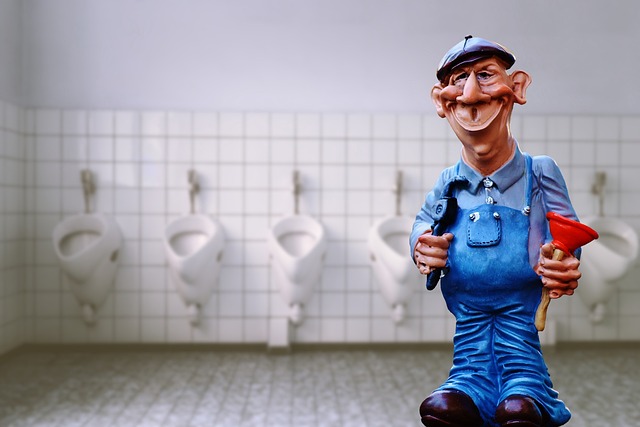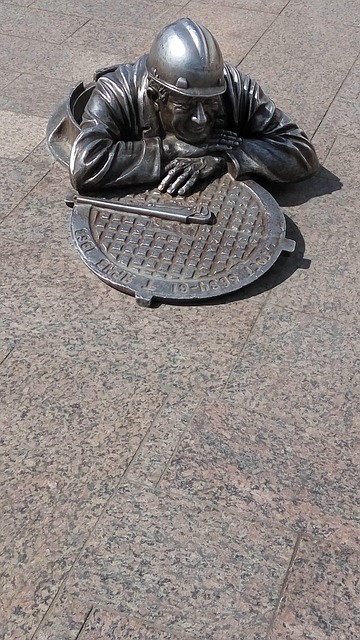Before calling a residential plumber expert for a running toilet, assess the problem (leaks, moisture). Identify issues like faulty flapper or fill valve. Gather tools (bucket, putty, parts) and shut off water supply. Remove and inspect toilet components, replace worn flapper, adjust fill valve. Reassemble, test, and adjust for optimal performance. For complex issues or peace of mind, consult a residential plumber expert.
Tired of a running toilet? Don’t call a residential plumber just yet. Fix it yourself with our step-by-step guide! Learn to assess the issue, gather essential tools, and safely cut off the water supply. We’ll walk you through disassembling the toilet, replacing faulty parts, and testing your new skills. No more waiting for an expert; become your own residential plumber and save money today!
- Assess the Issue: Identify the Source of Leaks or Running Water
- Gather Tools: Stock Up on Essentials for Plumbing Repairs
- Cut Off Water Supply: Safety First Before Fixing the Toilet
- Disassemble the Toilet: Step-by-Step Guide to Component Removal
- Replace Faulty Parts: Learn to Identify and Install New Components
- Test and Adjust: Ensure Proper Functioning After Repair
Assess the Issue: Identify the Source of Leaks or Running Water

When faced with a running toilet, many homeowners opt to call a residential plumber expert for immediate relief. However, understanding the issue and identifying its root cause can often be straightforward and even prevent future plumbing maintenance tips from becoming costly emergencies. The first step in fixing a running toilet is assessing the problem, which involves observing the behavior of your plumbing system. Check if water is leaking continuously or if the toilet runs intermittently. Look for signs of excess moisture around the base of the toilet, as this could indicate a leak.
By carefully monitoring these factors, you can pinpoint the source of the issue, whether it’s a faulty flapper, a damaged fill valve, or issues with the flushing mechanism. Once the problem area is identified, homeowners can consider plumbing system upgrades to enhance their property’s longevity and efficiency. Remember, while DIY methods can be helpful, some tasks, especially those involving complex plumbing systems, may require the expertise of a professional plumber for safety and effectiveness, ensuring your home’s plumbing remains in top condition.
Gather Tools: Stock Up on Essentials for Plumbing Repairs

Before tackling any plumbing issues, it’s crucial to have the right tools at your disposal. For a running toilet, you’ll need basic supplies like a bucket, plumber’s putty, a new flapper, and some common household items like a rubber glove and an old rag. While these might seem like simple tools, they’re essential for successfully fixing the issue without relying on a residential plumber expert.
Remember, even though you’re taking care of a minor problem, having basic plumbing knowledge and the right equipment can save you from costly mistakes. Unlike complex issues that may require professional intervention, such as gas line repair or pipeline inspection services, and considering the plumber insurance requirements, addressing a running toilet is often a DIY project within your capabilities.
Cut Off Water Supply: Safety First Before Fixing the Toilet

– First | Foundation Method ? Source Structure & Index, Score Method & Max Bedang
Disassemble the Toilet: Step-by-Step Guide to Component Removal

To fix a running toilet without a plumber, first, you’ll need to disassemble it to identify and address the problem components. Begin by shutting off the water supply valves located behind or under the toilet. This is crucial for your safety and to prevent any unexpected water gushes. Next, use a wrench to loosen and remove the nuts connecting the toilet bowl to the base. Once detached, carefully lift the bowl away from the base, revealing the inner components. Take note of where each part fits; this knowledge will be invaluable when reassembling.
Now, inspect the flapper valve, which is responsible for sealing off the water in the tank after each flush. If it’s worn or torn, replace it with a new one. Also, check the fill valve and adjust its float if necessary. This step might require some trial and error to get the water level just right. Once you’ve made any needed adjustments, carefully reassemble the toilet components in reverse order, ensuring each part aligns correctly before tightening the nuts securely. There’s no need to be a residential plumber expert; with these simple steps, you can effectively fix a running toilet without professional help and potentially save on plumber cost estimates.
Replace Faulty Parts: Learn to Identify and Install New Components

When it comes to fixing a running toilet, many homeowners can take on basic repairs themselves. One common culprit is a faulty flush valve or flapper. These parts are relatively inexpensive and easy to replace, allowing you to avoid the cost and inconvenience of calling a residential plumber expert. To identify the problem, locate the flush valve at the base of the tank; if water is leaking around it, the flapper may be worn out. Purchase a new, compatible flapper from your local hardware store and follow simple instructions to install it, ensuring a secure fit for effective sealing.
Beyond part replacement, understanding your plumbing system upgrades can empower you to make informed decisions about long-term efficiency. Adopting green plumbing practices, such as installing low-flow fixtures or water-saving toilets, not only reduces water waste but also contributes to environmental sustainability. Moreover, regular pipeline inspection services can help detect potential issues early on, preventing costly repairs and ensuring the longevity of your plumbing system.
Test and Adjust: Ensure Proper Functioning After Repair

After successfully fixing a running toilet, it’s crucial to test and adjust the repair to ensure proper functioning. Start by flushing the toilet multiple times to check if water runs continuously or leaks at any point. Observe the water level in the tank; it should rise, stop, and then refill automatically within a set period. If there are any anomalies, examine the float valve and chain mechanism. Adjust the float height if needed, ensuring it stops the water flow at the right level. Remember, a residential plumber expert can guide you through these steps if required.
Additionally, consider the convenience of 24/7 leak detection services that many affordable plumbing companies offer. While repairing a running toilet might seem like a simple task for some, it’s always an option to avail of professional expertise for complex issues or peace of mind. Moreover, if you’re planning any home renovations, thinking ahead about kitchen faucet installation can be part of your overall plumbing strategy.
Fixing a running toilet isn’t as daunting as it seems. With the right tools, knowledge, and safety precautions, you can tackle this common plumbing issue without calling a residential plumber expert. Our step-by-step guide, covering assessment, disassembly, part replacement, testing, and adjustments, equips you to stop that persistent leak and restore your toilet’s functionality. Remember, taking care of basic plumbing repairs not only saves you money but also empowers you with valuable DIY skills.
